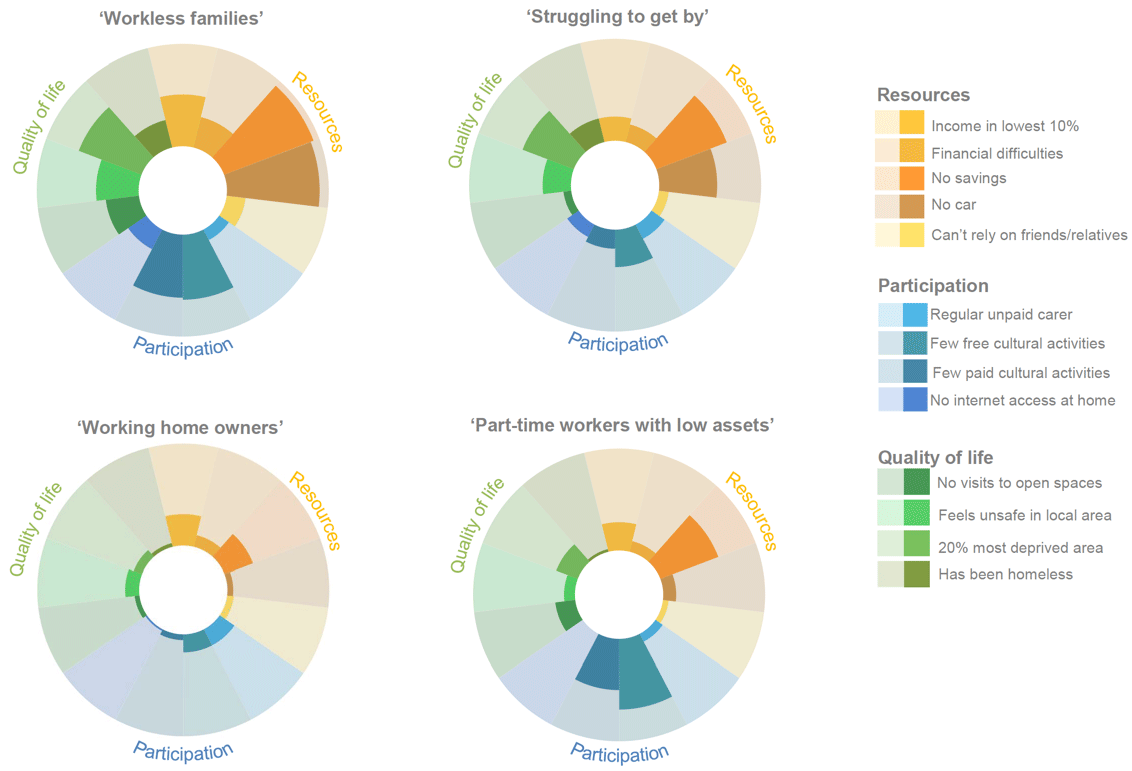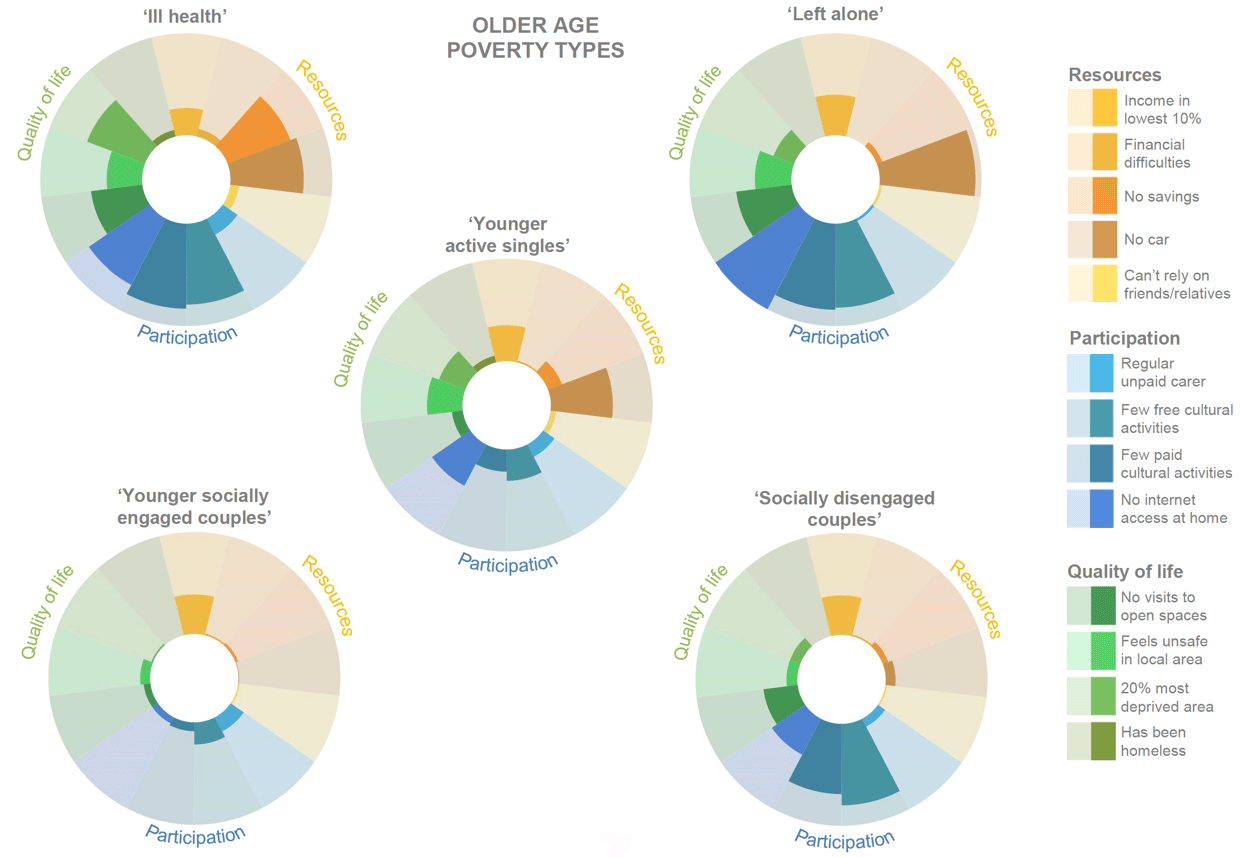Poverty in Perspective: a typology of poverty in Scotland
Sets out 13 different ‘types’ of poverty across three life stages: families with children, working age households without children, and pensioner households.
Executive summary
This study provides a detailed picture of the various experiences of poverty that low income (below 70% median income) households in Scotland face. It describes this through analysis of the Scottish Household Survey, replicating a methodology used in previous work by the authors (Wood et al, 2012). This produces a poverty typology for Scotland, where households in each poverty type share a similar set of poverty experiences.
The research retains low income as a fundamental element of poverty and the poverty typology includes low income households only. Thirteen indicators are used to graphically represent different experiences of living in poverty. These indicators help to capture the complex interactions of some of the fundamental experiences of poverty, such as not having savings, low social support, not taking part in cultural activities and feeling unsafe.
The results are 13 types of poverty, spread across three pre-determined life stages: families with children, working age without children, and older age. The fact that different types of poverty emerge, helps to demonstrate that life on low income is not the same for all households. Some go without numerous items and activities, whereas others go without far fewer. See the graphics below for a visual summary of the poverty types.
Understanding the experiences of those in poverty is an important step in producing policies that improve their living standards. As well as presenting the main features of each poverty type, we consider the policy implications for households likely to have that combination of poverty experiences. For each poverty type, we explore how the group might be identified, how the causes and symptoms of their experience of poverty might be alleviated, and the implications of these findings for local and national poverty strategies.
Families with children - Poverty types

Working age families without children - Poverty
types

Older age poverty types

Contact
There is a problem
Thanks for your feedback